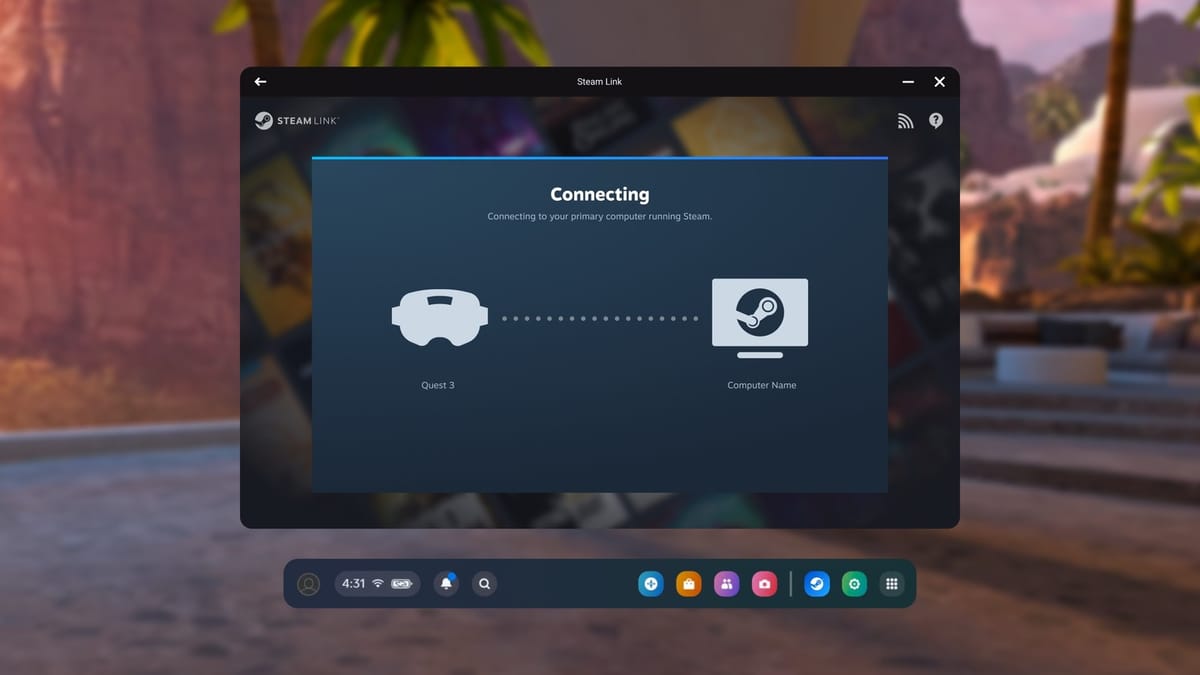
This months’s SteamVR update brings Advanced Supersample Filtering back to Quest, and it supports the Steam Link app.
Advanced Supersample Filtering has been an option in SteamVR since 2017, but Valve says it was “accidentally disabled” for Meta headsets a few years ago as “a side-effect of another change”. The latest SteamVR update brings it back for Steam Link and Meta’s Quest Link. The setting doesn’t affect Virtual Desktop.
Supersampling refers to rendering at a higher resolution than the headset’s display panels to produce a sharper and perceptually higher detail image with less aliasing, something you as a user can choose to do on PC VR. Once rendered, the higher resolution image needs to be downsampled to be sent to the headset at its native resolution. SteamVR’s Advanced Supersample Filtering option is a newer method of doing this that produces less aliasing at the cost of a slightly softer image.
To notice the effect of Advanced Supersample Filtering you’ll need to be using a very high resolution value in the SteamVR Video settings, so it will be most useful for people with ultra high-end graphics cards that aren’t just using the ‘Auto’ resolution setting.
Valve Launches Steam Link PC VR Streaming App For Quest
Valve just launched a free Steam Link app on the Quest Store that can stream SteamVR games from your PC.

The update also adds 10-bit color depth video encoding for AMD graphics cards that support this, which should result in significantly reduced color banding and thus superior image quality, especially noticeable in any situations with distinct color gradients, such as fog or darkness. Valve warns that Steam Link’s AMD support in general is still considered experimental though.
Here’s the full changelog for Steam Link in this month’s SteamVR update:
Visual Experience:
• Enable 10-bit video encoding on AMD graphics cards with this capability
• Enable “Advanced Supersample Filtering”. This improves video quality when using high supersampling rates.
• HMD Interstitial performance improvement
• Fix frame-sync bug causing extra jitterConnection Issues:
• Allow connection to proceed even in network configurations without QoS support
• Error 200 – Allow connections for users with missing QoS bits contributing to error 200
• Stream resets and recovery – Reduced friction related to stream resets and recovery for some networksGeneral:
• Fix for multiple crashes particularly when under extreme load
• Debug UI improvements
• Reduced some log spam
• Change headset behavior to reduce reliance on lack of motion for entering “standby” state
• SteamVR Session End – Returns user to Steam Link start menu
• Speed up how quickly users can click the “Connect” button when starting stream
• Fix not updating wifi AP name on interstitial
• Improve AMD feedback when running on unsupported cards.
• Tweak mini graph levels in debug UI.
• Added tongue tracking to OSC output.
• Change way SteamVR detects/attempts to connect to Steam, to avoid issue where SteamVR thinks Steam is gone.
• Resolved issue causing black screen in 2D UI while transitioning between activities.
As you can spot in the changelog, the update also adds support for Quest Pro’s new tongue tracking capability:
Steam Link For Quest Pro Now Supports Tongue Tracking
Valve’s Steam Link app now supports Quest Pro’s new tongue tracking feature in VRChat.

Update December 21: These beta changes have now rolled out to the stable SteamVR branch. This article, originally published December 13, has been updated to reflect this.






